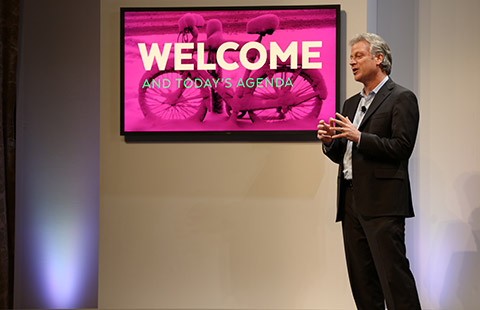First two months of 2017 set uncertain tone for future sales
 |
|
A Haval H2 from Great Wall Motor is displayed at an auto expo in Shenyang, Liaoning province. [Photo/Xinhua] |
Government's new tax deduction rate stalls industry growth after massive purchasing boom last year
The auto market may be signaling a shaky year after the government's eased tax deduction, and the industry may need to tackle issues under the hood for solid and healthy growth.A total of 3.9 million passenger cars were sold in the first two months of 2017, breaking the bimonthly sales record of 3.6 million units of the same period last year for year-on-year growth of 6.3 percent, according to statistics released by the China Association of Automobile Manufacturers on Friday.
The data showed sport utility vehicles continue to climb by 28.7 percent to 1.6 million units sold. Sedans and hatchbacks kept growing by 6.4 percent to 1.9 million units, while multipurpose vehicles fell by 15.7 percent to 352,000 during the period of January to February of this year.
"The changes made to the tax deduction policy had minor influence on the market. We found the cars with 1.6-liter or smaller engines are still popular," said Chen Shihua, assistant to the secretary-general of CAAM.
Xu Haidong, another assistant to the association's secretary-general, said, "The policy is playing its proper role in the industry, and generating positive impacts. But the effects are certainly softer, not as stimulating as in 2016."
John Zeng, managing director of LMC Automotive Consulting (Shanghai) Co, foresaw a negative impact from the weakened tax deduction policy.
He said: "The moderate amount of tax deduction, which is about 10,000 yuan ($1,450) for a luxury car, means little to the buyers. Many have already made purchases last year to benefit from the more favorable policy at that time."
The tax rate climbed to 7.5 percent beginning January 1, 2017 and will rise back to the normal 10 percent in 2018 for small cars with engine displacement of 1.6 liters or less.
The central government slashed the purchase tax by half to 5 percent in October 2015. The tax break was in effect for October 2015 to the end of 2016.
LMC predicted the annual growth rate would reach no more than 2 percent, less optimistic than CAAM's 5 percent, after the country saw growth of 13.7 percent in 2016.
Analysts look at the combined sales volume of the first two months of the year, as the lunar new year holidays fell in January this year, but in February last year, according to Zeng.
"Only if the first half resulted in 4 to 5 percent growth would the annual rate touch 2 percent. It's unlikely to see growth in the second half, as the sales achieved a sky-high record in the last several months last year," Zeng said.
Zeng noted that 2 percent annual growth based on China's tremendous market size would be exceptional growth, and 5 percent would be huge.
In 2016, auto sales in the world's largest auto market reached a record high of 28 million, up 13.7 percent year-on-year. Auto sales growth hit 26.1 percent year-on-year, in September last year-the highest in more than three years-before winding down in the following months.
Xu said the pattern of the market's development is usually not clear in the first two months, so there's no fuss in the figures.
"We are expecting the industry's healthy and sustainable development instead of short-term, stimulated, explosive growth," he added.
The rapidly-growing SUV segment has been serving as carmakers' profit source because the production facilities and platforms are usually shared with the sedan models, but priced higher.
"The SUV fever reflects the customers' preferences. Carmakers are market-oriented companies following consumption trends," Shi Jianhua, deputy secretary-general of CAAM, said.
"However there's room for carmakers to develop-for example, in higher comprehensive quality, lower fuel consumption and better environmental protection."
There are already international car manufacturers applying the cutting-edge technologies in preparation for future trends.
Daimler AG is using biturbocharged engines to squeeze more output from combustion engines. BMW i keeps the engine in an energy-efficient mode all the time by charging the battery when the car is idle and using the electricity to accelerate.
Xu pointed out that Chinese carmakers are still behind and in need of further research and development and a stronger supply chain, despite the fact that they are catching up in the compact and mid-size segments.
"Chinese brands are still weak in large sedans and SUVs. There's not a single model yet capable of rivaling Toyota's Camry or the Honda CR-V," Xu said.
"Only when Chinese brands take a total market share of more than 30 percent can we say China has a strong automotive industry," he added.
To realize significant growth again this year, Zeng recommended carmakers give price discounts to the buyers to complement the eased tax deduction.
"The affluent margin easily made from transforming hatchbacks to SUVs will be no more," Zeng said.























